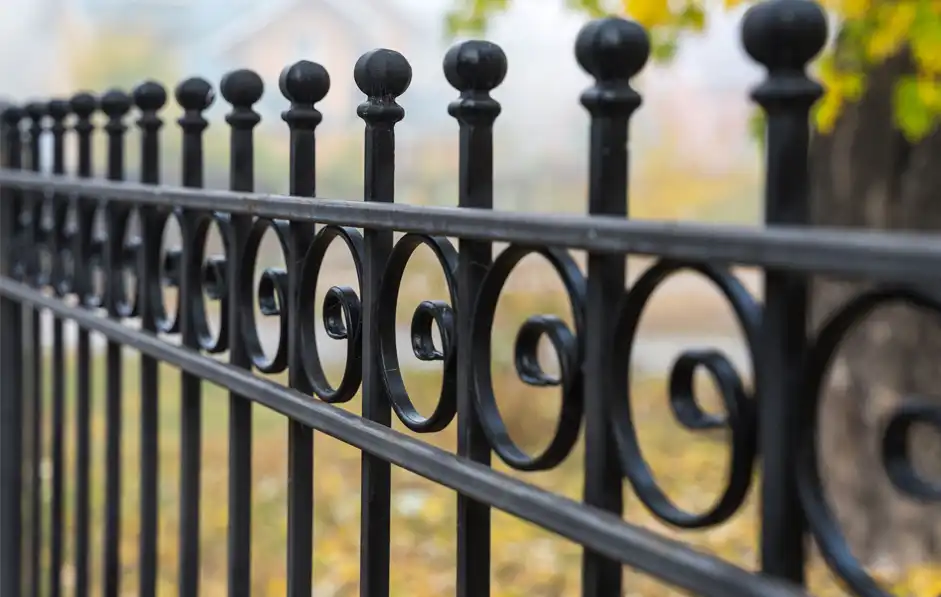All Categories
Featured
When it pertains to keeping a wood fencing, home owners often deal with the decision of whether to repaint or stain. Both alternatives have their pros and cons, and the selection inevitably depends upon your visual preferences, the kind of wood, and exactly how much upkeep you're willing to devote to. Here's an in-depth comparison to help you make an informed choice.
The Essentials of Painting and Staining
Painting entails covering the wood with an opaque layer of shade. It offers full coverage, concealing the timber grain while supplying excellent defense against environmental components.
Staining penetrates the wood, improving its natural appeal while adding a protective layer. Relying on the kind, spots can range from clear to strong, enabling differing degrees of timber grain presence.
Benefits And Drawbacks of Paint
Pros:
Vast Array of Colors: Repaint offers endless shade choices, allowing you to match your fencing to your home's outside or personal style.
Longer Long-term: Premium exterior paint can last as much as 5-7 years, needing less regular reapplication.
Superior Protection: Paint types a thick, solid barrier against moisture, UV rays, and bugs.
Disadvantages:
Peeling and Splitting: Over time, paint can crack or peel, specifically in areas with severe climate problems.
Hides Natural Timber Appeal: If you like the all-natural grain of timber, paint may not be the finest choice.
Higher Upkeep: Repainting calls for scuffing off the old paint, which can be labor-intensive.
![]()
Pros and Cons of Discoloration
Pros:
All-natural Look: Discolorations protect and enhance the natural elegance of the timber, making it perfect for top notch timber like cedar or redwood.
Simpler to Reapply: Unlike paint, discolorations don't peel off or break. Reapplying tarnish commonly requires less surface area prep work.
Adaptable Complete Options: Stains can be found in clear, semi-transparent, and solid selections, using different levels of protection.
Cons:
![]()
Shorter Life-span: Spots, semi-transparent and especially transparent ones, might require reapplication every 2-3 years.
Restricted Shade Options: While spots provide all-natural tones, they lack the broad shade scheme offered with paint.
Much Less Safety: Stains penetrate the timber but don't offer as thick an obstacle as paint, making them somewhat less protective versus severe weather.
Variables to Think About
Visual Preferences: If you desire vibrant colors and total insurance coverage, paint is the method to go. For a rustic and all-natural appearance, decide for stain.
Timber Kind: High-quality woods with stunning grains take advantage of discoloration, while lower-grade woods can be repainted for a refined appearance.
![]()
Environment: In damp or damp climates, paint's thicker obstacle may provide much better security. In dry or modest environments, spots can be adequate.
Upkeep Dedication: Paint involves less constant reapplication but even more initiative during touch-ups. Discoloration requires regular maintenance but is easier to manage.
Final Ideas
Both painting and staining can successfully shield and beautify your wooden fence. The very best alternative relies on your priorities, whether they favor looks, resilience, or convenience of upkeep. By recognizing the benefits and disadvantages of each, you can choose the finish that straightens with your needs and ensures your fence stays a standout feature of your property for years to find.
The Essentials of Painting and Staining
Painting entails covering the wood with an opaque layer of shade. It offers full coverage, concealing the timber grain while supplying excellent defense against environmental components.
Staining penetrates the wood, improving its natural appeal while adding a protective layer. Relying on the kind, spots can range from clear to strong, enabling differing degrees of timber grain presence.
Benefits And Drawbacks of Paint
Pros:
Vast Array of Colors: Repaint offers endless shade choices, allowing you to match your fencing to your home's outside or personal style.
Longer Long-term: Premium exterior paint can last as much as 5-7 years, needing less regular reapplication.
Superior Protection: Paint types a thick, solid barrier against moisture, UV rays, and bugs.
Disadvantages:
Peeling and Splitting: Over time, paint can crack or peel, specifically in areas with severe climate problems.
Hides Natural Timber Appeal: If you like the all-natural grain of timber, paint may not be the finest choice.
Higher Upkeep: Repainting calls for scuffing off the old paint, which can be labor-intensive.

Pros and Cons of Discoloration
Pros:
All-natural Look: Discolorations protect and enhance the natural elegance of the timber, making it perfect for top notch timber like cedar or redwood.
Simpler to Reapply: Unlike paint, discolorations don't peel off or break. Reapplying tarnish commonly requires less surface area prep work.
Adaptable Complete Options: Stains can be found in clear, semi-transparent, and solid selections, using different levels of protection.
Cons:

Shorter Life-span: Spots, semi-transparent and especially transparent ones, might require reapplication every 2-3 years.
Restricted Shade Options: While spots provide all-natural tones, they lack the broad shade scheme offered with paint.
Much Less Safety: Stains penetrate the timber but don't offer as thick an obstacle as paint, making them somewhat less protective versus severe weather.
Variables to Think About
Visual Preferences: If you desire vibrant colors and total insurance coverage, paint is the method to go. For a rustic and all-natural appearance, decide for stain.
Timber Kind: High-quality woods with stunning grains take advantage of discoloration, while lower-grade woods can be repainted for a refined appearance.

Environment: In damp or damp climates, paint's thicker obstacle may provide much better security. In dry or modest environments, spots can be adequate.
Upkeep Dedication: Paint involves less constant reapplication but even more initiative during touch-ups. Discoloration requires regular maintenance but is easier to manage.
Final Ideas
Both painting and staining can successfully shield and beautify your wooden fence. The very best alternative relies on your priorities, whether they favor looks, resilience, or convenience of upkeep. By recognizing the benefits and disadvantages of each, you can choose the finish that straightens with your needs and ensures your fence stays a standout feature of your property for years to find.
Latest Posts
Uncover the Premier Auto Repair Coupons in Montclare, Chicago
Published May 25, 25
1 min read
Check Out Premier Auto Repair Care offered by Montclare Auto Repair – Drive with Confidence
Published May 23, 25
1 min read
Enhance Your Building with Overhead Door Equipment
Published May 22, 25
1 min read